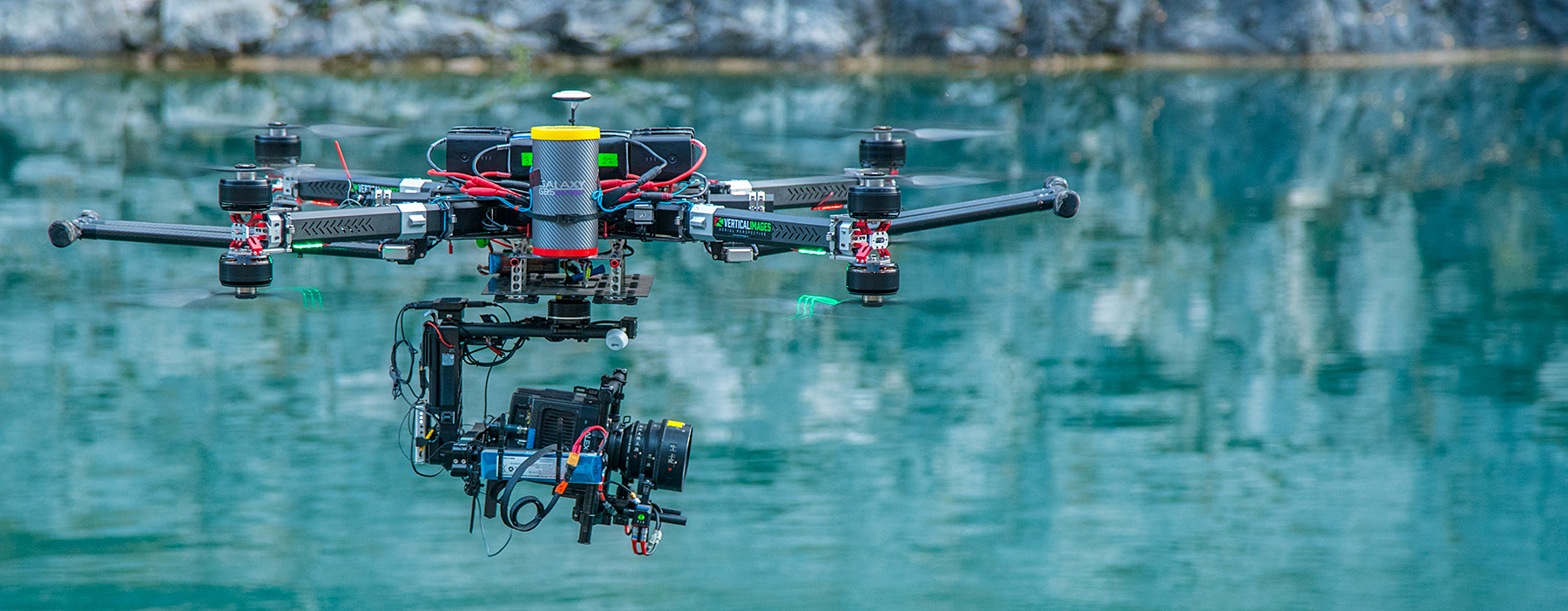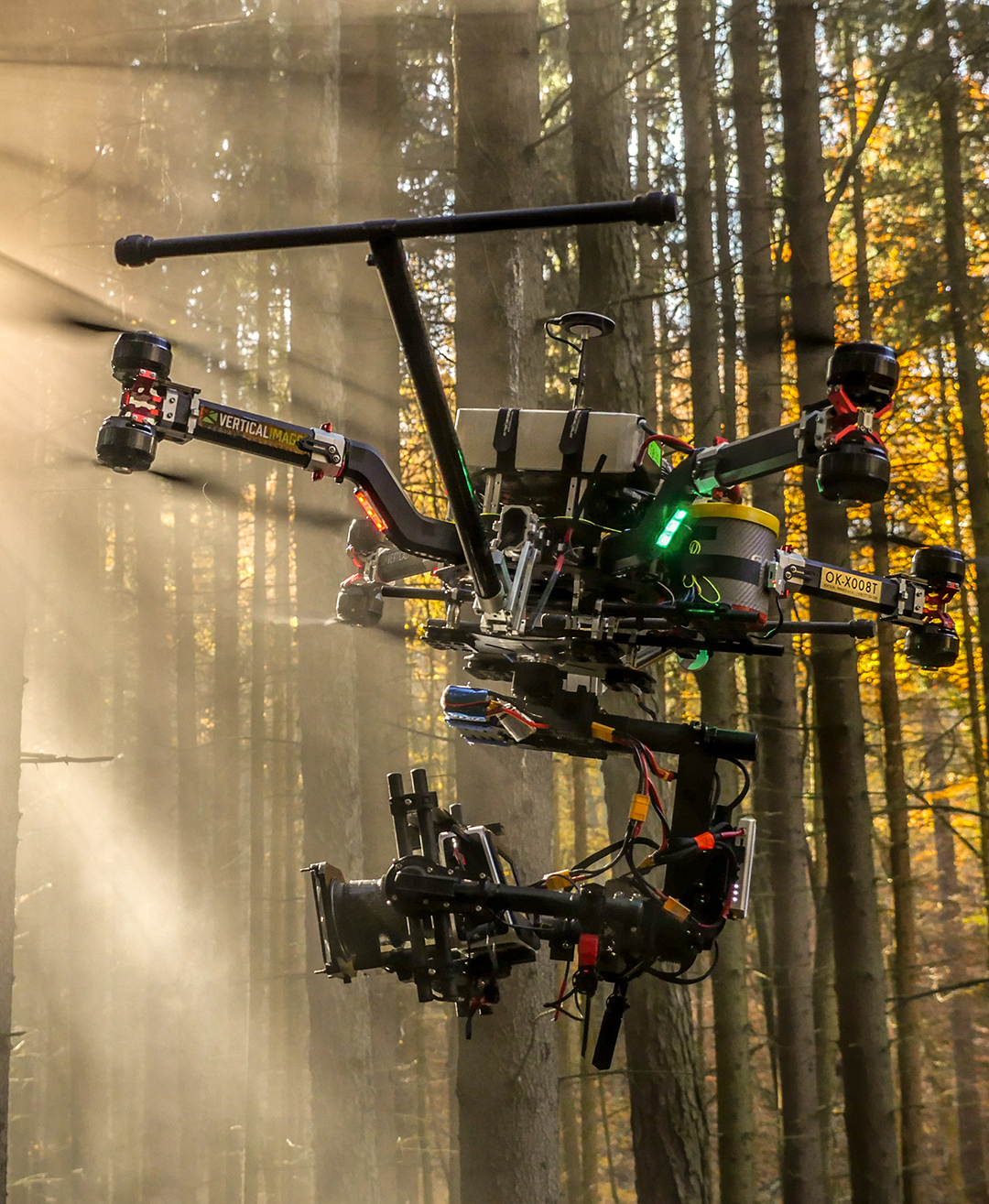
Drone Focus: Learning to Fly
Could drone pilot and operator skills help future-proof your career?
Could drone pilot and operator skills help future-proof your career? (Part 1 of 3)
By Patricia Thomson

“Drones are going to make their way onto film sets. It’s just a matter of time,” says Corey Bracone, a grip and recently licensed drone pilot. During his time on Spider-Man: Homecoming, Girl on the Train and other major feature productions, Bracone felt there’d been a “hole, something missing” in camera mobility. Then one day it clicked: A drone would do those jobs quickly, efficiently and affordably.
Last year, Bracone and his brother Ian, an ICG Local 600 focus puller, joined the throngs taking advantage of an FAA game-changer: Under the old regulations, one had to be a licensed pilot before applying for drone pilot certification. No longer. As of June of 2016, Part 107 — the regulations governing small unmanned aerial systems (PDF here) — requires just an aeronautics-heavy written exam, opening the door to serious drone hobbyists such as the Bracone brothers, who’ve since started their own business.
Local 600’s West Coast division now has over 200 certified drone pilots, while the East Coast has about a dozen. (FAA restrictions on flying in New York City’s congested airspace plays into that discrepancy.) Michael Chambliss, a technologist for ICG and Local 600, is bullish about the future of drones on film and television sets. “This is really a new vernacular within the language of cinematography,” he says. “It’s a development similar to the Steadicam, in that it opens an entirely a new kind of shot. Think of a MōVI on top of a Steadicam.” Bracone takes it further: “It’s a MōVI on a Steadicam that drinks a Red Bull, then gets wings and is literally able to fly.”
Being a new specialty within the film/television industry, drone use suffering some growing pains. One contested area is the question of who operates the remote head on dual-operator heavy lifters. The gimbal operator on a work-for-hire aerial team? Or an operator already on the production?
“The common pattern currently is for the pilot and camera operator to be a team that are brought in to do the shot,” says Chambliss. “The reason is the variety of equipment; a lot of it is customized.” Even when it’s not, a drone’s controls take getting used to. “In traditional flight heads, the joystick controls are very similar, and there’s a small number of flight heads. There’s a larger number with drones,” he points out. What’s more, “the smaller the craft, the more it’s changed by lens choice. Your flight characteristics will be different with different lenses.” An aerial team knows how their various drones will react to differing payloads; they’ve developed their own shorthand language; they’re partners in every sense of the word. “It’s Fred and Ginger doing the dance routines,” Chambliss says.
But there can be push-back from production. “On most shows and sets, the DP would rather have their person operating the remote head on the camera, and you’d just hire a pilot,” says Eric Fletcher, technical chairperson of the Society of Camera Operators. “Camera operating on a drone is very similar to camera operating on a Technocrane,” he continues. “A camera operator is hired for a very specific reason: They know how to tell the story, how to operate the camera, and they make the DP comfortable. You get two guys walking on set, saying, ‘Hey, Burt’s here with the drone! What do you want us to do?,’ that’s a little unsettling to a DP.”
Fortunately, the choice isn’t binary. Max Tubman, director of North American operations for Gryphon Dynamics and a filmmaker himself, prefers to integrate these approaches. His ideal aerial team comprises a drone pilot, a gimbal operator, and a gimbal tech. Once on set, his in-house team brings out wheels. “They’re very familiar to a lot of people,” he says. “The gimbal tech will go to the A Camera op and say, ‘This is how it works. Do you want to give it a shot?’ Sometimes they’ll say, ‘I don’t want this to be on me, because I’ve never done it before’ or whatever. But we always offer.” Thus far, “eight or nine times out of 10, A camera operator says, ‘Let the gimbal tech operate the camera.’ ”
That ratio is likely to change as more operators get hands-on experience. Forward-looking camera operators would be wise to familiarize themselves with drone heads, whether or not they want certification. (Only the pilot in command needs a license.) Companies like Gryphon are working to make that happen. Last May, they invited 10 leading operators from New York and L.A. to a day-long training event featuring their latest fleet.
But new pilots should be prepared for a fluid, confusing regulatory environment — and perhaps some advocacy work. Current regulations leave many practical questions unanswered, and the FAA is frank about its unwillingness to clarify matters. “What the FAA told me is, ‘Your industry is free to create standards as you see fit.’ But they were not going to be involved in that process,” says Chambliss. As a result, “we’re trying to pull members together to come up with a baseline set of flight safety standards that would be applicable across all sets.”
On the East Coast, Bracone and a committee are also working on a best-practices handbook and pushing for easements in NYC-specific restrictions. That advocacy work is as much a part of their nascent business as the fleet of five drones that Bracone and his brother fly. They consider it a necessary investment in their future. Once the dust settles, he says, “We’re ready to go!”
For more in our Drone Focus series, see:





